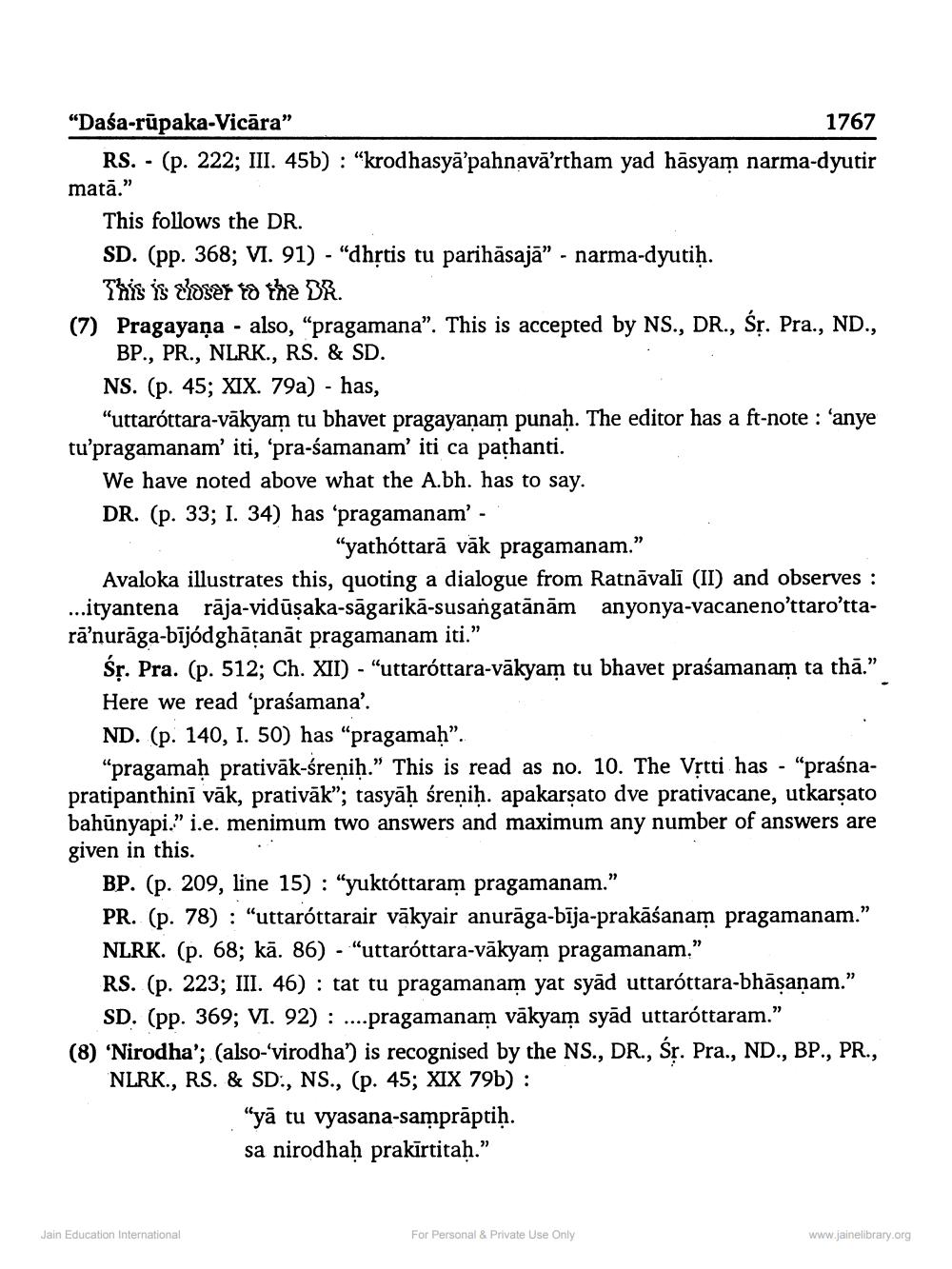________________
"Daśa-rūpaka-Vicāra”
1767 RS. - (p. 222; III. 45b) : "krodhasyā’pahnavā’rtham yad hāsyam narma-dyutir matā."
This follows the DR. SD. (pp. 368; VI. 91) - "dhịtis tu parihāsajā” - narma-dyutiḥ.
This is closer to the BR. (7) Pragayaņa - also, “pragamana”. This is accepted by NS., DR., Śs. Pra., ND.,
BP., PR., NLRK., RS. & SD. NS. (p. 45; XIX. 79a) - has,
"uttaróttara-vākyam tu bhavet pragayanam punaḥ. The editor has a ft-note : 'anye tu'pragamanam' iti, 'pra-samanam' iti ca pathanti.
We have noted above what the A.bh. has to say. DR. (p. 33; I. 34) has 'pragamanam' -
"yathóttarā vāk pragamanam." Avaloka illustrates this, quoting a dialogue from Ratnāvali (II) and observes : ...ityantena rāja-vidūsaka-sāgarikā-susangatānām anyonya-vacaneno'ttaro'ttarā’nurāga-bījódghāțanāt pragamanam iti.”
śr. Pra. (p. 512; Ch. XII) - "uttaróttara-vākyam tu bhavet praśamanam ta thā.” Here we read 'praśamana'. ND. (p. 140, I. 50) has “pragamaḥ”.
“pragamaḥ prativāk-śreņih." This is read as no. 10. The Vștti has - "praśnapratipanthinī vāk, prativāk"; tasyah śrenih. apakarsato dve prativacane, utkarsato bahūnyapi." i.e. menimum two answers and maximum any number of answers are given in this.
BP. (p. 209, line 15) : “yukróttaram pragamanam.” PR. (p. 78) : "uttaróttarair vākyair anurāga-bīja-prakāśanam pragamanam.” NLRK. (p. 68; kā. 86) - "uttaróttara-vākyam pragamanam." RS. (p. 223; III. 46) : tat tu pragamanam yat syād uttaróttara-bhāṣaṇam.”
SD. (pp. 369; VI. 92): ....pragamanam vākyam syād uttaróttaram.” (8) 'Nirodha'; (also-'virodha) is recognised by the NS., DR., Śr. Pra., ND., BP., PR., NLRK., RS. & SD., NS., (p. 45; XIX 79b) :
"yā tu vyasana-samprāptiḥ. sa nirodhaḥ prakīrtitah.”
Jain Education International
For Personal & Private Use Only
www.jainelibrary.org




